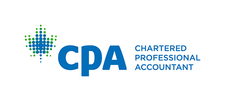By now everyone has either heard of or applied for the 75% Canada Emergency Wage Subsidy (CEWS). The program was originally intended to cover a 12-week period, from March 15 to June 6, 2020. Finance Minister Bill Morneau announced an extension of this program by an additional 12 weeks to August 29, 2020. If you are a Canadian employer whose business has been affected by COVID-19, you may be eligible for the 75% wage subsidy, retroactive from March 15, 2020, to August 29, 2020.
As of June 30, 2020, the Government is in the process of consulting with key business and labor representatives on whether there will be any changes to the program or eligibility requirements. For now, they have announced that period 4, June 7 to July 4, 2020, will follow the same eligibility criteria as claim periods 1-3. Please see the chart below.
| Claim period | Start and end dates | Baseline revenue | Claim period revenue | Required reduction |
| 1 | March 15 to April 11, 2020 | March 2019, or average of January and February 2020 | March 2020 | 15% |
| 2 | April 12 to May 9, 2020 | April 2019, or average of January and February 2020 | April 2020 | 30% |
| 3 | May 10 to June 6, 2020 | May 2019, or average of January and February 2020 | May 2020 | 30% |
| 4 | June 7 to July 4, 2020 | June 2019, or average of January and February 2020 | June 2020 | 30% |
To be eligible to receive the wage subsidy, you must:
- Be an eligible employer
- Have experienced an eligible reduction in revenue, and
- Have had a CRA payroll account on March 15, 2020
To clarify, you must calculate whether your company has experienced a reduction in revenues for any claim period. Compare your 2020 claim period revenue to your baseline revenue.
Baseline revenue is either a) the revenue you earned in the corresponding month in 2019, or b) the average of the revenue you earned in January and February 2020. You must choose a or b for your method of comparison and will not be able to change it for your calculations for any other periods. Essentially, this means no going back and forth between which method you use to calculate the revenue decline.
The CRA will ensure compliance on these applications so expect either follow-up phone calls to verify certain elements of your claim, or even more comprehensive post-payment reviews or audits. Make sure you have documented your claims and your payroll records. This means showing proof of work for your calculation of the revenue decline and analysis of eligible remuneration paid to employees.
Watch for Anti-avoidance Rules on Qualifying Revenues
You will not be eligible for the 75% wage subsidy if the entity participates in a plan that has one of the main purposes of effectively reducing the employer’s qualifying revenue to qualify for the subsidy. Any entity caught doing so will be subject to a penalty equal to 25% of the amount of the wage subsidy under the anti-avoidance rules, in addition to repayment of the subsidy received.
CRA has prepared a helpful Q&A on the Canada Emergency Wage Subsidy. If you need assistance with your CEWS application or concerned you may not have prepared the application correctly, contact us today and we will ensure your application is accurate and audit proofed!
Contact Argento CPA today!

